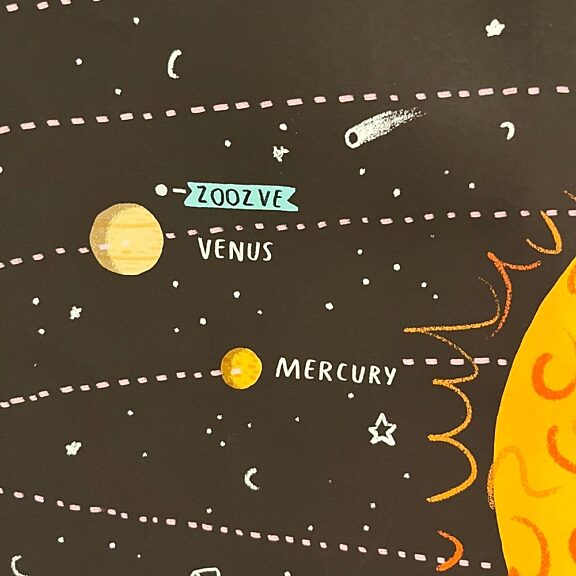What is Venus' quasi-moon Zoozve?

Written by
Kate Howells
Public Education Specialist, The Planetary Society
February 12, 2024
Venus and Mercury are the only planets in the Solar System without moons, but that’s not the whole story.
In 2002, astronomer Brian Skiff of Lowell Observatory in Flagstaff, AZ, discovered the first known quasi-moon around Venus. This unusual object was originally given the temporary title 2002VE68, but on Feb. 5, 2024, it got a snappier name: Zoozve.
What is a quasi-moon?
Zoozve is a quasi-moon, which means that it is an asteroid that appears to orbit Venus, but is not gravitationally bound to it. Instead, it goes around both Venus and the Sun in a complex orbit. Zoozve’s orbit is unstable, meaning it will eventually be ejected from its quasi-satellite orbit.

Quasi-moons like this had been predicted, but none had been discovered until Skiff spotted and tracked Zoozve in 2002. Since then, a quasi-moon of Neptune has been discovered, as well as seven quasi-moons of Earth.
Because Zoozve crosses Earth’s orbital path, it’s also considered a near-Earth asteroid. This designation, combined with the asteroid’s diameter of about 230 meters (750 feet), means Zoozve is considered a potentially hazardous object, although it is not predicted to impact the Earth.
How did Zoozve get its name?
The name Zoozve is not at all typical for planetary bodies. The International Astronomical Union, which is responsible for approving names for celestial objects, prefers names of mythological origin for objects like Zoozve that cross Earth’s orbit. The name was proposed by Latif Nasser, co-host of the science podcast Radiolab, who got in touch with Skiff after seeing a children’s poster of the Solar System that showed a moon alongside Venus with the name “ZOOZVE” beside it.

Nasser investigated this strange label, having confirmed that Venus has no known moons, and discovered that the name (and the inclusion of the moon itself) was a mistake made by the artist who had made the poster. When researching which moons to include, Alex Foster, the artist, had seen something online about the discovery of Venus’ quasi-moon and had written “2002VE” in his notes, later misreading it as “ZOOZVE” when copying it over onto the illustrated map.
Nasser reached out to Brian Skiff, convincing him to pursue an official renaming of the object to the more delightful Zoozve, and on Feb. 5, 2024, the IAU officially announced the newly named quasi-moon.
Although Venus remains a moonless planet, its newly-named quasi-satellite is a welcome addition to the planetary family.
Support our core enterprises
Your gift today will go far to help us close out the year strong and keep up our momentum in 2026.
Donate

 Explore Worlds
Explore Worlds Find Life
Find Life Defend Earth
Defend Earth

